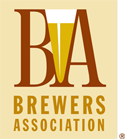Sanitary Testers: ATP Theory
What is ATP and why is it used as an indicator of sanitary quality in brewing and draught beer systems?
ATP, short for “adenosine triphosphate,” is a high-energy molecule that stores energy in cells, and consists of adenine, a ribose sugar, and three phosphate groups (Timberlake, Structures of Life, 2nd ed., 2007). ATP, because of its prevalent role in cellular metabolism, is a highly ubiquitous biomolecule that is produced by nearly every living cell of every species. It is the carrier of chemical energy that fuels the majority of anabolic reactions within an organism to maintain metabolic balance.
How does cellular metabolism and ATP production relate to brewery and draught beer sanitation?
The theory applied to the use of ATP as an indicator molecule for sanitary quality is based on well-accepted scientific knowledge that every living cell must produce ATP to stay alive; therefore, ATP levels should correspond to the number of bacterial cells living in a sample of beer. But it is important to understand that electronic ATP testers are only able to detect ATP and CANNOT detect bacterial cells.
Since the development of ATP sensors for detecting bacterial levels beer, much has been learned about bacterial life cycles and the efficacy of ATP for quantitative analysis. Recent biochemical and microbiological research has indicated that ATP levels do vary with cell count, but population size is not the primary determinant of ATP levels. ATP concentration varies depending on a number of environmental factors unrelated to bacterial population size.
Factors Affecting ATP Test Results:
ATP is a nutrient. Cellular processes have evolved in ways that efficiently support life. Because ATP is critical to the health of a living organism, bacteria prefer not to export ATP out of the cell. Nearly all ATP, like any nutrient, will remain inside of the cell (intracellular) until it is digested during regular cellular metabolism and excreted as waste.
Cells of any species have enzymes and organelles that precisely orchestrate the uptake of useful chemicals and nutrients into the cell, while ensuring effective digestion and release of waste products and toxins out of the cell.
In a study performed at UCLA and Berkeley, extracellular ATP concentrations among Salmonella and E. coli test strains showed to vary from 1-30 nanomoles during growth and stationary phase, and extracellular ATP actually decreased during stationary phase—when cell count is highest (Mempin, Release of extracellular ATP during growth, BMC Microbiology, 2013).
The ATP that is detected by an ATP tester is a tiny portion of the total ATP that exists in any sample of beer. The ATP sensed by the chemical probe of an ATP tester results from extracellular ATP release which will vary independent of population size—as much as 30-fold—during the life of a bacterial colony. The great majority of ATP exists intracellularly and is not accessible to a sensor or probe. Consequently, ATP test results do not provide an accurate measurement of total ATP or the concentration of viable bacterial cells in a sample of beer.
Life Cycle
The bacterial life cycle is complex. Understanding the build-up, maintenance, and subsequent destruction of bacterial cells and colonies is obviously a very important area of scientific research. These topics involve everything from antibiotic development and public sanitation to environmental bioremediation and ecology. Microbes are everywhere, and the mysteries of their existence have been under investigation since Louis Pasteur’s discovery of single-celled organisms in 1860. Bacteria continue to evolve and scientists continue to reveal their phenomenal strategies to maintain health and reproduction.
The life cycle of a bacterial cell, like any living organism, has a natural rhythm and sequence of events—it is produced by the division of a parent cell, daughter cells undergo growth and maturation, then reproduce or die. But this ideal framework for understanding bacterial life is averted when environmental fluctuations stimulate bacterial survival strategies that drastically alter the metabolic activities and physical composition of bacterial cells and colonies.
Sugar
One of the most important environmental factors that affects cellular metabolism is the availability of nutrients. Cells will oscillate between a healthy, “well-fed” state and a starvation state. These conditions direct metabolic responses from the cell involving ATP production and consumption. One of the most essential nutrients for the life of a cell is sugar.
Sugar, in the form of maltose and glucose, is also an essential ingredient in beer. Bacteria living in draught beer and brewing systems are dependent on sugar for healthy metabolism and ATP production. Glucose, specifically, is the precursor molecule for the production of ATP, therefore, when glucose levels are high, ATP production is optimized and cells grow and reproduce at a healthy sustainable rate. If nutrient availability is depleted, cells will slow their production of new ATP molecules and conserve existing ATP.
In a study of 21 different bacterial species belonging to the genus Enterococcus, nutrient-deprived cells that were unable to produce ATP due to starvation were placed in a 1% (wt/vol) glucose liquid growth agar to stimulate ATP production. The result was an immediate 5 to 30-fold increase in both intracellular and extracellular ATP within the first hour (Hironaka, Glucose Triggers ATP Secretion from Bacteria in a Growth-Phase-Dependent Manner, Applied and Environmental Microbiology, 2013).
The effect nutrient availability has on cellular processes and ATP level is quite significant, and must be taken into consideration when interpreting results of an ATP test with regard to bacterial population and sanitation.
Oxygen
Another effect that environmental conditions have on bacterial production of ATP is caused by the presence or absence of oxygen. Oxygen, like sugar, is essential to the health of a cell. It is the single determinant of aerobic and anaerobic metabolism. When oxygen is present in the environment, cells perform aerobically. Environmental oxygen is taken up by the cell and utilized in cellular respiration for ATP synthesis. When oxygen is available, cellular respiration occurs at a rate that yields 32 ATP molecules per 1 glucose sugar molecule.
It is standard practice in the brewing and draught beer industries, though, to implement procedures that minimize oxygen levels in beer, therefore, many of the microbes contaminating beer are likely to be undergoing anaerobic metabolism as well. Anaerobic metabolism is stimulated when oxygen levels are low. In beer, bacteria rely on fermentative anaerobic pathways for their survival. Fermentation enables cells to metabolize glucose sugar in the absence of oxygen, but yields only 2 ATP molecules per glucose molecule (Nelson, Principles of Biochemistry, 5th ed., 2008).
Depending on the level of dissolved oxygen in any beer, ATP levels will vary up to a factor of 16 between aerobic and anaerobic metabolism. Such dramatic variations in ATP levels are the effect of dissolved oxygen concentration and biochemical response by bacteria, and are not correlated to bacterial population size.
Biofilms
Biofilms are complex communities of bacteria living in a self-produced matrix that is capable of adhering to both inert and biological surfaces (Van Houdt, Biofilm formation and cell-to-cell signaling in Gram-negative bacteria isolated from a food processing environment, Journal of Applied Microbiology, 2003). Biofilms are a somewhat recent topic of interest to biochemists and microbiologists, as the industrial relevance of bacterial biofilms has grown to be quite significant.
Biofilms display a level of cooperative strategy among bacterial communities that is unobserved in planktonic (free-floating) bacteria. Many species of bacteria are capable of organizing communal defense mechanisms and survival strategies by forming into films. Biofilms are protected by a mucosal or polysaccharide layer that is secreted by the participating cells. This layer not only protects the colony from environmental stress, it also selectively channels chemicals throughout the microbial community to conserve essential biomolecules like ATP while efficiently transporting waste out (Wilking, Liquid transport facilitated by channels in Bacillus subtilis biofilms, National Academy of Sciences, 2012).
Once biofilms are established, they are difficult to remove and poorly detect by ATP alone. In a study performed by the American Association for Laboratory Animal Science, researchers determined the average minimum detection level for E coli to be 1,000,000 cells per milliliter, and stated that “pure gram-negative bacteria are detected very weakly” by ATP alone (Turner, Efficacy and Limitations of an ATP-Based Monitoring System, Journal of the American Association of Laboratory Animal Science, 2010).
Biofilm development among bacterial species such as E. coli is stimulated as a survival mechanism when population density escalates and nutrients become scarce. Biofilms enable large bacterial populations to persist under sub-optimal living conditions by conserving nutrients, slowing their metabolism, and constructing a protective barrier between the cells and their environment.
ATP is not released from biofilms at a significant rate and therefore should not be used to measure bacterial levels if biofilms are present. In addition, biofilms form when bacterial population size is at its peak, and will render false negative results when serious contamination may in fact be present.
Suggested Methods for Measuring Bacterial Contamination in Beer
The most effective methods for determining sanitary quality involve visualization of actual bacterial cells within a test sample of beer. This is accomplished by placing samples on solid growth media composed of sugar and other essential nutrients, and allowing bacterial colonies to grow. Each cell present in the original sample will grow into a visible colony on the media. Contamination can then be determined based on the number of CFUs (colony forming units) that grow.
This method produces a very accurate measurement of bacterial contamination, which is described in practical terms as a ratio of cells per unit volume. By producing results directly from the physical presence of living bacterial cells, the researcher eliminates the potential for instrumental error and limitations that may be incurred by using electronic test equipment.
The quantitative sensitivity of culture plate tests may also be adjusted by producing serial dilutions of the original sample or altering the volume of sample plated. A very large sample size may be tested to detect minor contamination when cell counts are very low (ie. below the detectable limit of an electronic ATP tester). If contamination is more serious, the visualization and quantification of dense bacterial populations is improved by simply diluting the original sample.
By accurately determining cell count, brewery and draught beer technicians can precisely gauge the effectiveness of their sanitation procedures. Maximum contaminant levels (MCLs) for bacteria should be set as quality control parameters to direct sanitation protocol. By implementing routine culture plate analyses, brewery laboratories and draught beer technicians can ensure proper product quality and the health and safety of their customers.




